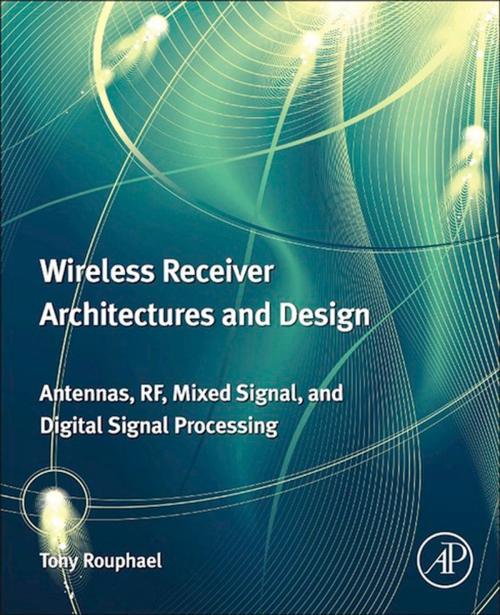Wireless Receiver Architectures and Design
Antennas, RF, Synthesizers, Mixed Signal, and Digital Signal Processing
Nonfiction, Science & Nature, Technology, Industrial Design, Engineering| Author: | Tony J. Rouphael | ISBN: | 9780123786418 |
| Publisher: | Elsevier Science | Publication: | June 17, 2014 |
| Imprint: | Academic Press | Language: | English |
| Author: | Tony J. Rouphael |
| ISBN: | 9780123786418 |
| Publisher: | Elsevier Science |
| Publication: | June 17, 2014 |
| Imprint: | Academic Press |
| Language: | English |
Wireless Receiver Architectures and Design presents the various designs and architectures of wireless receivers in the context of modern multi-mode and multi-standard devices. This one-stop reference and guide to designing low-cost low-power multi-mode, multi-standard receivers treats analog and digital signal processing simultaneously, with equal detail given to the chosen architecture and modulating waveform. It provides a complete understanding of the receiver‘s analog front end and the digital backend, and how each affects the other. The book explains the design process in great detail, starting from an analysis of requirements to the choice of architecture and finally to the design and algorithm development. The advantages and disadvantages of each wireless architecture and the suitability to a standard are given, enabling a better choice of design methodology, receiver lineup, analog block, and digital algorithm for a particular architecture.
Whether you are a communications engineer working in system architecture and waveform design, an RF engineer working on noise and linearity budget and line-up analysis, a DSP engineer working on algorithm development, or an analog or digital design engineer designing circuits for wireless transceivers, this book is your one-stop reference and guide to designing low-cost low-power multi-mode multi-standard receivers. The material in this book is organized and presented to lead you from applied theory to practical design with plenty of examples and case studies drawn from modern wireless standards.
- Provides a complete description of receiver architectures together with their pros and cons, enabling a better choice of design methodology
- Covers the design trade-offs and algorithms between the analog front end and the digital modem – enabling an end-to-end design approach
- Addresses multi-mode multi-standard low-cost, low-power radio design – critical for producing the applications for Smart phones and portable internet devices
Wireless Receiver Architectures and Design presents the various designs and architectures of wireless receivers in the context of modern multi-mode and multi-standard devices. This one-stop reference and guide to designing low-cost low-power multi-mode, multi-standard receivers treats analog and digital signal processing simultaneously, with equal detail given to the chosen architecture and modulating waveform. It provides a complete understanding of the receiver‘s analog front end and the digital backend, and how each affects the other. The book explains the design process in great detail, starting from an analysis of requirements to the choice of architecture and finally to the design and algorithm development. The advantages and disadvantages of each wireless architecture and the suitability to a standard are given, enabling a better choice of design methodology, receiver lineup, analog block, and digital algorithm for a particular architecture.
Whether you are a communications engineer working in system architecture and waveform design, an RF engineer working on noise and linearity budget and line-up analysis, a DSP engineer working on algorithm development, or an analog or digital design engineer designing circuits for wireless transceivers, this book is your one-stop reference and guide to designing low-cost low-power multi-mode multi-standard receivers. The material in this book is organized and presented to lead you from applied theory to practical design with plenty of examples and case studies drawn from modern wireless standards.
- Provides a complete description of receiver architectures together with their pros and cons, enabling a better choice of design methodology
- Covers the design trade-offs and algorithms between the analog front end and the digital modem – enabling an end-to-end design approach
- Addresses multi-mode multi-standard low-cost, low-power radio design – critical for producing the applications for Smart phones and portable internet devices















